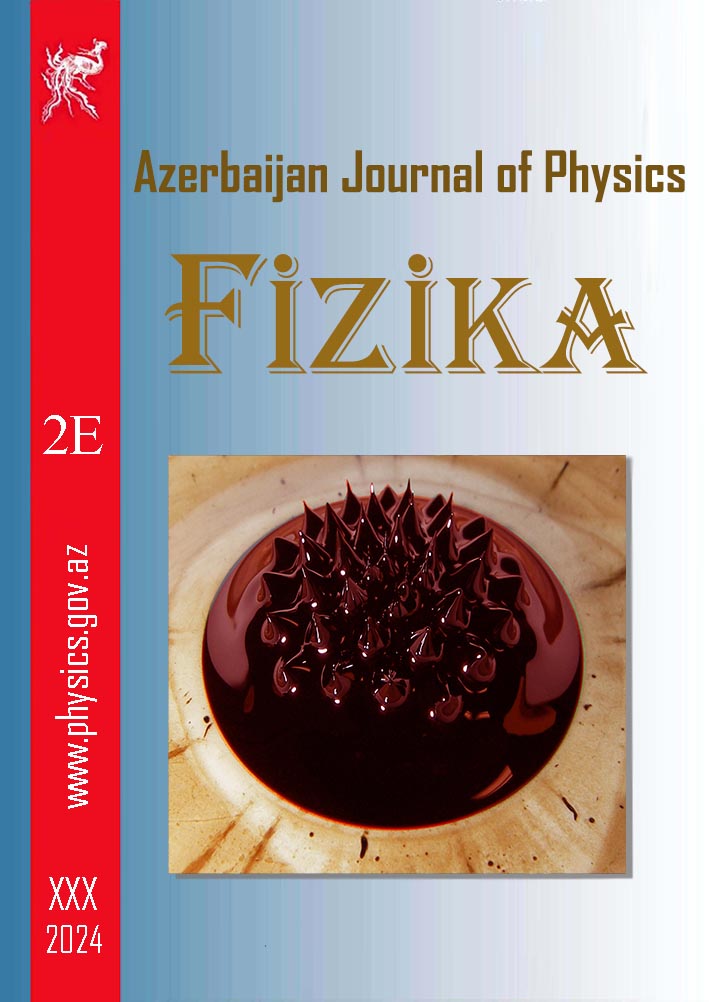ABSTRACT
A similar effect was observed for γ-quanta in binary fission after observing the ROT effect for ternary fission particles (charged particles) formed in the 235U
(n, f) reaction induced by polarized cold neutrons. The explanation of this effect is based on maintaining the spin orientation of the main fission fragment and the angular
anisotropy of the γ-quanta generated by the spin (fragment center of mass). Based on this explanation, it is possible to determine the angle of rotation δ of the fission
axis in binary fission. This work presents the results obtained for the effect of rotation (ROT) in the angular distribution of prompt γ rays from the fission of
235U induced by monochromatic polarized “warm” neutrons (En = 60 meV). The polarization vector direction is determined at the target position in order to
correctly determine the sign of the measured effect. Moreover, the rotation angle of the fission axis was determined to be equal to 0.069° ± 0.008° taking into
account the fit results of the angular distribution of the prompt fission γ rays. The obtained value and sign of the ROT effect are consistent with the results of the ROT
effect obtained for cold neutrons.
Keywords: spin angle, ROT effect, neutron polarization, nuclear fission, 233U, 235U, instantaneous gamma rays, neutron, plastic scintillation detector, multiwire proportional counter, spin flipper, angular correlation
PACS: 85.60.Ha; 21.60.−n; 24.10.−i
DOI:-
Received: 13.05.2022
AUTHORS & AFFILIATIONS
1. Institute of Radiation Problems of ANAS, Baku, Azerbaijan
2. Joint Institute Nuclear Research Dubna, Russia
3. National Nuclear Research Center, Baku, Azerbaijan
E-mail: ahmadovg@nf.jinr.ru
|
REFERENCIES
[1] F. Goennenwein, M. Mutterer, A. Gagarski et al.. Phys. Lett., 2007, B 652, 13.
[2] P. Jesinger, G.V. Danilyan, A. Gagarski et al.. Phys. Atom. Nucl., 1999, 62, 1608.
[3] P. Jesinger, A. Kötzle, A. Gagarski et al.. Nucl. Instrum. Meth., 2000, A 440, 618.
[4] A. Gagarski, F. Gönnenwein, I. Guseva et al.. Phys. Rev., 2016, C 93,054619.
[5] G.V. Danilyan, J. Klenke, V.A. Krakhotin et al.. Phys. At. Nucl., 2009, 72, 1812.
[6] G.V. Danilyan, J. Klenke, V.A. Krakhotin et al.. Phys. At. Nucl., 2011, 74, 671.
[7] G.V. Danilyan, J. Klenke, Yu. Kopatch et al.. Phys. At. Nucl., 2014, 77, 677.
[8] G.V. Valsky, A.M. Gagarski, I.S. Guseva et al.. Bull. Russ. Acad. Sci. Phys., 2010, 201074, 767.
[9] D. Berikov, G. Ahmadov, Yu. Kopatch, et al.. Phys. Rev., 2021, C 104, 024607.
[10] Yu. Kopatch, V. Novitsky, G. Ahmadov et al.. EPJ Web Conf. 2-18, 169, 00010.
[11] V. Hutanu, M. Meven, and G. Heger. Phys. B: Condens. Matter, 2007, 397 135.
[12] V. Hutanu. J. Large-Scale. Res. Facil. 1 A16, 2015.
[13] D. Berikov, V. Hutanu, Yu. Kopatch et al.. J. Instrum. 2020, 15, P01014.
[14] R.A. Akbarov, G.S. Ahmadov, F.I. Ahmadov et al.. Nucl. Instrum. Methods Phys. Res. A, vol. 936, pp. 549-551, 2019.
[15] D.B. Berikov, et al.. Вестник. Серия Физическая (ВКФ), [S.l.], 2019, v. 71, № 4, p. 29-34.
|
